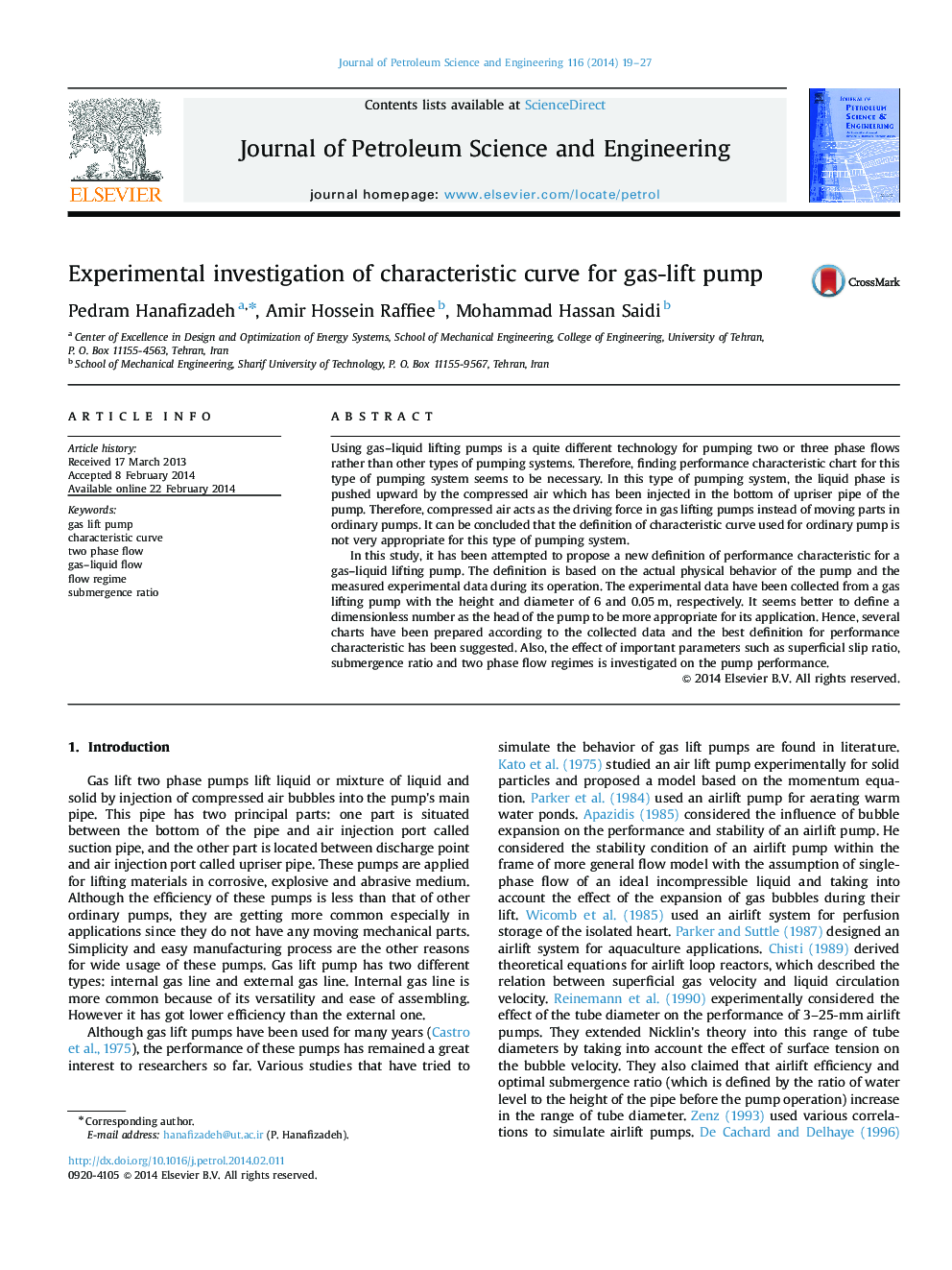| Article ID | Journal | Published Year | Pages | File Type |
|---|---|---|---|---|
| 1755128 | Journal of Petroleum Science and Engineering | 2014 | 9 Pages |
•New definition of performance characteristic was introduced for a gas lift pump.•Effects of slip and submergence ratios have been considered on performance of the pump.•Effects of two phase flow regimes were studied on the defined head of the pump.•A gas-lift pump has been examined experimentally and the valuable data extracted.
Using gas–liquid lifting pumps is a quite different technology for pumping two or three phase flows rather than other types of pumping systems. Therefore, finding performance characteristic chart for this type of pumping system seems to be necessary. In this type of pumping system, the liquid phase is pushed upward by the compressed air which has been injected in the bottom of upriser pipe of the pump. Therefore, compressed air acts as the driving force in gas lifting pumps instead of moving parts in ordinary pumps. It can be concluded that the definition of characteristic curve used for ordinary pump is not very appropriate for this type of pumping system.In this study, it has been attempted to propose a new definition of performance characteristic for a gas–liquid lifting pump. The definition is based on the actual physical behavior of the pump and the measured experimental data during its operation. The experimental data have been collected from a gas lifting pump with the height and diameter of 6 and 0.05 m, respectively. It seems better to define a dimensionless number as the head of the pump to be more appropriate for its application. Hence, several charts have been prepared according to the collected data and the best definition for performance characteristic has been suggested. Also, the effect of important parameters such as superficial slip ratio, submergence ratio and two phase flow regimes is investigated on the pump performance.
